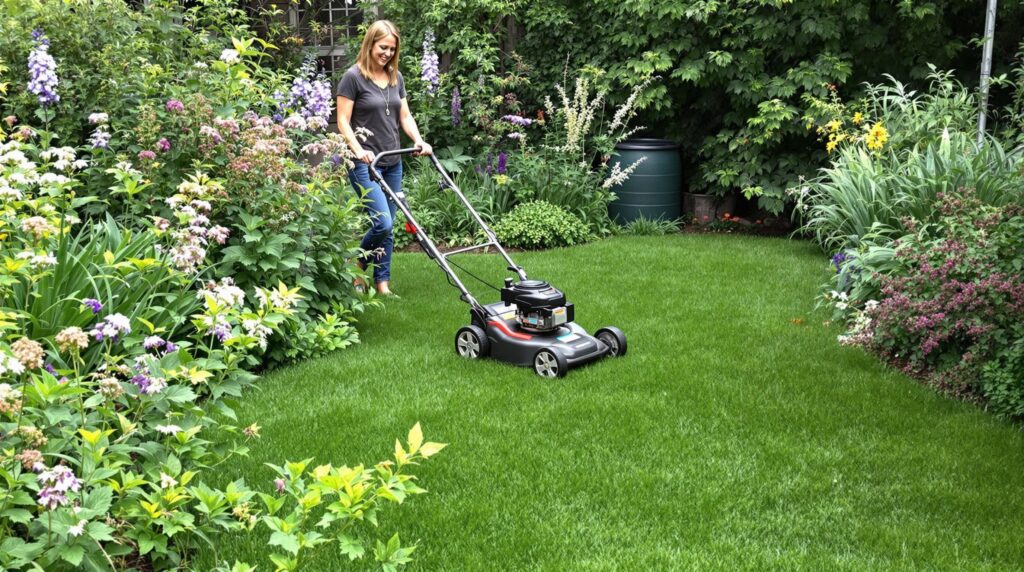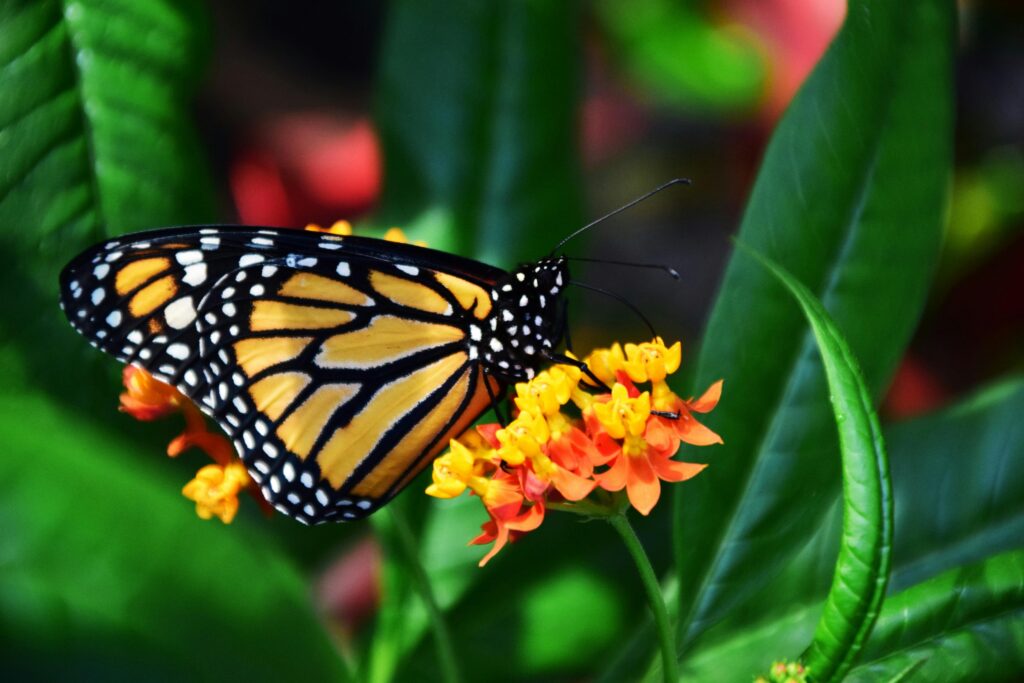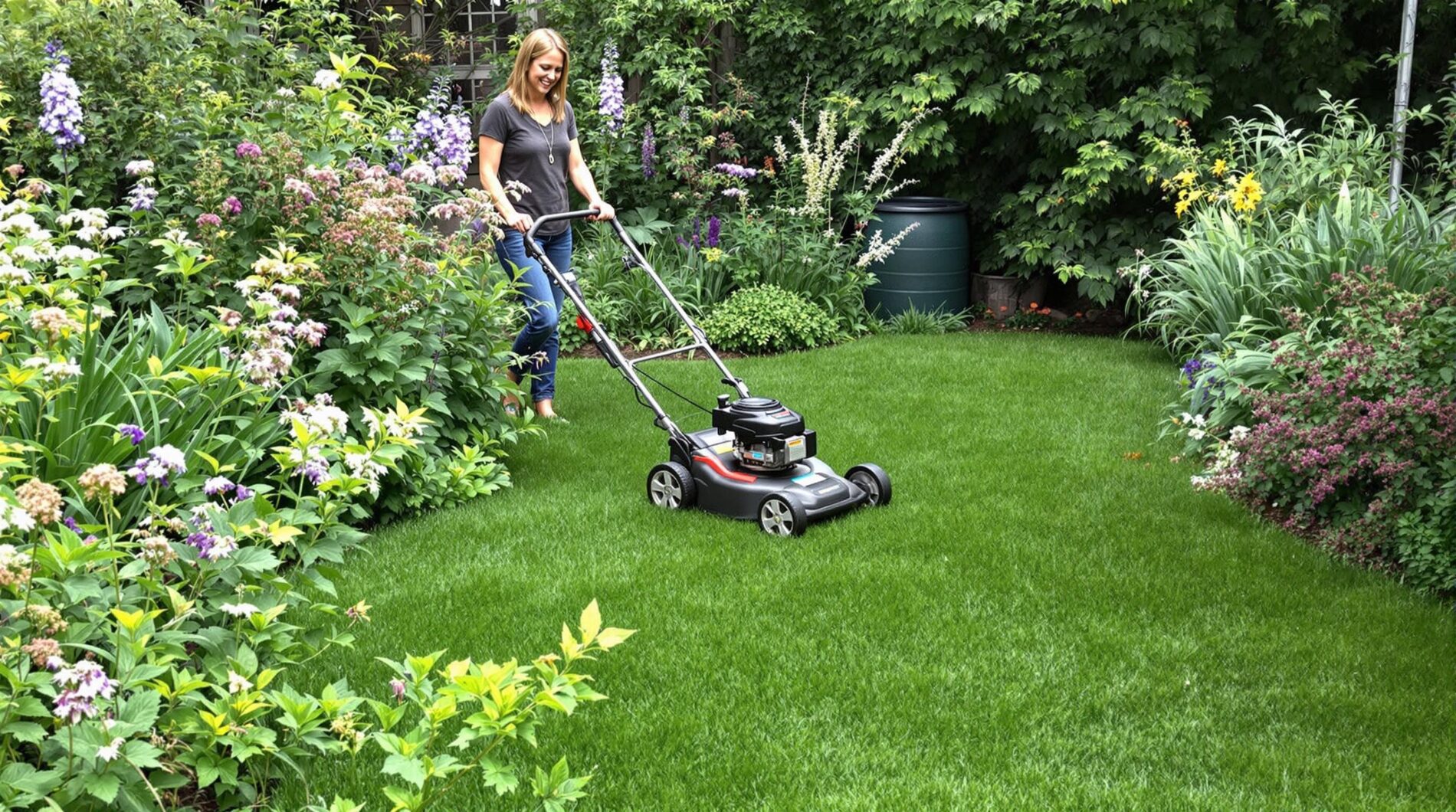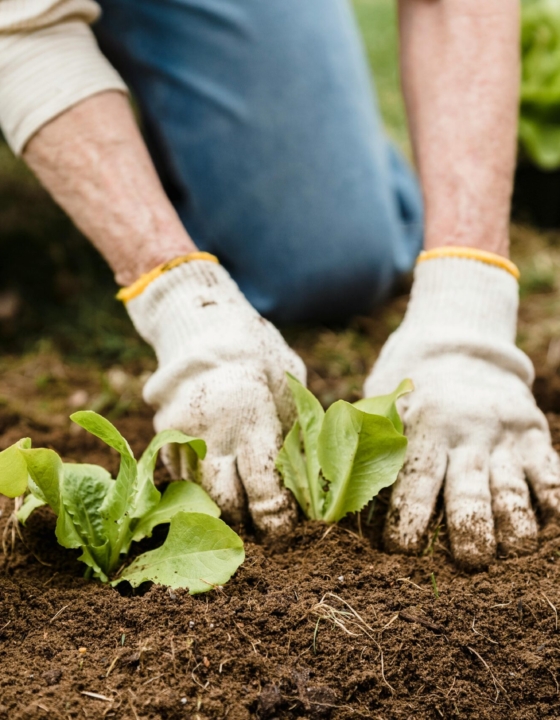A well-kept lawn doesn’t have to come at the cost of the environment. Traditional lawn care methods rely heavily on chemical fertilizers, pesticides, and excessive water usage, all of which harm local ecosystems. By switching to eco-friendly lawn care, you can maintain a lush, green space while protecting wildlife, conserving resources, and reducing pollution.
Here are some tips to get started.

Improve soil health
Start by improving your soil health, as nutrient-rich soil leads to stronger, more resilient grass. Avoid synthetic fertilizers, which can run off into waterways and contribute to pollution, and opt for organic alternatives or homemade compost tea instead. Aerating your lawn once or twice a year helps improve air circulation and water absorption, making the soil more fertile and reducing the need for chemical treatments.
Set up a compost bin and rain barrel
A compost bin is a great way to turn organic food waste into rich compost. Composting kitchen scraps and yard waste creates an organic fertilizer that enriches the soil naturally. A rain barrel helps to conserve water and is a wonderful resource. It provides extra watering for your needs as well as backup water for times of drought.
Avoid chemicals
From fertilizers to weed killers, avoid all chemicals. Natural solutions can take more time to work, but there are countless benefits. There are many alternatives to fertilizers, weed killers, pest treatments, and more. Chemical-free products will make for a healthier lawn, and a lawn that is safer for you, your children, your pets, pollinators, and the local wildlife.
Water efficiently
Watering efficiently is key to an eco-friendly lawn. Instead of frequent, shallow watering, which encourages weak root systems, water deeply and less often to promote strong root growth. Early morning or late evening watering minimizes evaporation, conserving water. Installing a rain barrel to collect rainwater provides a sustainable water source, while drip irrigation or soaker hoses ensure targeted hydration without waste.
Mow strategically
Mowing your lawn the right way also contributes to sustainability. Keeping the grass slightly longer, around three inches high, helps shade the soil, retain moisture, and reduce weed growth. Leaving grass clippings on the lawn instead of bagging them returns essential nutrients to the soil, acting as a natural fertilizer. Using a push or electric mower instead of a gas-powered one reduces carbon emissions and noise pollution.

Select native plants and grasses
Choosing the right grass and plants makes a big difference in lawn sustainability. Native grasses and drought-resistant species require less water and maintenance while thriving in local conditions. Incorporating clover or other low-maintenance ground covers can improve soil health and attract pollinators. Instead of relying on chemical pesticides, encourage beneficial insects and birds that naturally control pests, and use organic pest solutions like neem oil or homemade sprays when necessary.
Reduce lawn size
Reducing lawn size enhances sustainability, when replaced with native plant gardens, wildflower patches, or edible landscaping. These alternatives require less mowing, watering, and fertilizing while providing food and habitat for local wildlife. Replacing sections of grass with mulch, decorative rocks, or permeable pathways can also cut down on water use and maintenance while adding visual interest to your yard.











What do you think?